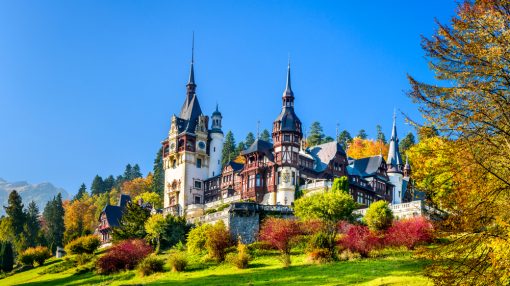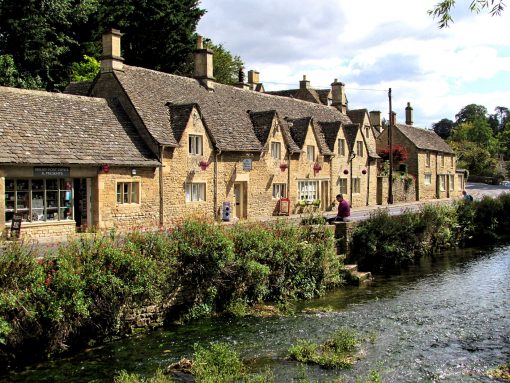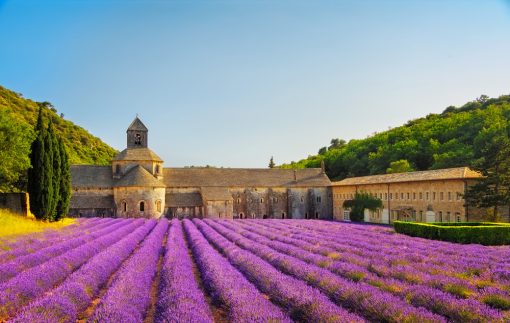A century has passed since Medz Yeghern – “The Great Crime” – began, but Armenians have not forgotten.
It all started April 24, 1915, when Ottoman authorities arrested and then executed some 250 leading Armenians living in Constantinople.
This was followed during the years of World War I by the systematic slaughter and forced deportation of millions of primarily Christian minorities then living in Ottoman territories – Greeks and Assyrians as well as ethnic Armenians.
The result (aside from at least 1 million deaths) was the creation of Armenian diaspora communities from Australia to Argentina.
That “ethnic cleansing” remains fresh in the memory of Armenians, who created a Genocide Memorial and Museum near Yerevan at Tsitsernakaberd. It offers dramatic testimony about the destruction of the Armenian communities of Eastern Anatolia.
An eternal flame in the center of the memorial is constantly surrounded by fresh flowers brought by visitors. English-language signage in the museum, completed in 1995, provides an introduction to the catastrophic event on the eve of World War I
Although part of the Soviet Union from 1922 to 1991, Armenia was never comfortable in that orbit due to its ethnic and religious homogeneity – most here and abroad, are members of the Armenian Apostolic Church, a Christian denomination dating to 301 CE (three decades before the Emperor Constantine declared Christianity the state religion of Rome).
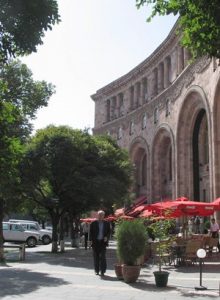 Standing in Yerevan’s Republic Square these days, you can imagine yourself anywhere in Europe. There are sidewalk cafés filled with smartly dressed men and women sipping coffee and talking on cell phones. Pedestrians crossing the square expertly dodge the fast-moving taxis, trucks and cars streaming past. Shop windows are filled with choices.
Standing in Yerevan’s Republic Square these days, you can imagine yourself anywhere in Europe. There are sidewalk cafés filled with smartly dressed men and women sipping coffee and talking on cell phones. Pedestrians crossing the square expertly dodge the fast-moving taxis, trucks and cars streaming past. Shop windows are filled with choices.
There’s an old saying that the Armenians have their minds in the west and their hearts in the east. Armenia’s capital is a cosmopolitan city is perched on that cultural boundary between Europe and Asia, providing the exotic in a familiar setting.
Viewed from the feet of the massive statue of Mother Armenia in Victory Park on a clear day, Mount Ararat seems close enough to touch. The Armenians consider themselves to be the descendants of Noah, whose ark is said to have beached on Ararat’s peak after the flood. This fabled mountain is the historic heart of the ancient Armenian empire, and the fact that it now lies across the closed border with Turkey is a touchy subject.
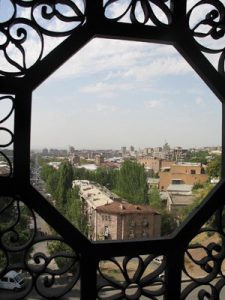 Downtown, the Matenadaran (manuscript library) houses the illuminated manuscripts from Armenia’s medieval culture, and guides are available to explain its collections. The massive gray basalt building, erected in the 1950s, looms over Mashtots Boulevard, named for the monk who devised the Armenian alphabet in the fifth century (in order to translate the Bible).
Downtown, the Matenadaran (manuscript library) houses the illuminated manuscripts from Armenia’s medieval culture, and guides are available to explain its collections. The massive gray basalt building, erected in the 1950s, looms over Mashtots Boulevard, named for the monk who devised the Armenian alphabet in the fifth century (in order to translate the Bible).
Echmiadzin is the seat of the Armenian Apostolic Church. Ancient khatchkars (stone crosses) and other religious monuments fill the complex, which includes the official residence of the Catholicos, the head of the church. Although much of the church’s wealth “disappeared” during the Soviet era, enough of the gold and gemstones remain to make a visit to the cathedral’s treasury worthwhile.
Garni, site of a restored pagan temple, and Geghard Monastery, a UNESCO World Heritage Site, are near each other a short distance east of the capital.
To the south is Khor Virap, where St. Gregory the Illuminator was imprisoned in 288 CE for preaching Christianity. He spent 13 years locked in an underground pit until he miraculously cured the king of some disease and, in gratitude, the king was converted.
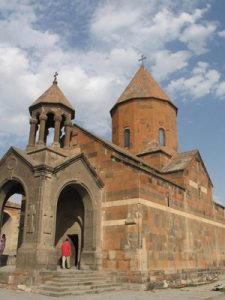 The pit itself is still preserved in the monastery complex. Intrepid visitors climb down the 27 rungs of a metal ladder bolted to one side of a narrow shaft into the underground room where the saint said he was sustained by angels.
The pit itself is still preserved in the monastery complex. Intrepid visitors climb down the 27 rungs of a metal ladder bolted to one side of a narrow shaft into the underground room where the saint said he was sustained by angels.
Almost all of the Muslims in Armenia left during its war with majority-Muslim Azerbaijan a decade ago. The only remaining mosque in Yerevan, Gök-Jami (built in 1765) was recently restored with grants from the Iranian government. Visitors can see the fine tile work of the portal and minaret along Mashtots Boulevard.
The country now known as Armenia is a remnant of a much larger territory. Two thousand years ago, it stretched from the Mediterranean to the Caspian seas. Centuries of military defeats and persecutions have moved the boundaries inward.
It’s estimated that there are 9 million Armenians in the world, but only 1/3 live in this shrunken homeland bordered on the north by Georgia, on the east by Azerbaijan, and on the south and west by Iran and Turkey.
(Photos by Susan McKee)
(Susan McKee’s visit to Armenia was hosted by the Armenia Marriott Hotel Yerevan; opinions are her own.)
You might also enjoy
Susan McKee is an independent scholar and freelance journalist specializing in history, culture and travel.





